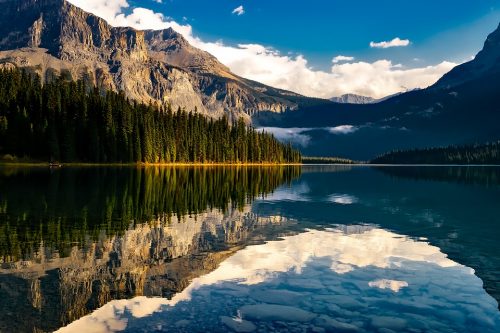Editor’s note: This article was originally published in The Hill Times

Despite its natural bounty and the significance of nature to our national identity, Canada has badly lagged other countries in the protection of ecosystems and wildlife habitat. To date, we have protected only 10.6 per cent of our terrestrial ecosystems and inland waters and less than five per cent of our marine areas. Among OECD countries, we rank 17th out of 25 in the proportion of lands protected, despite the global importance of Canadian lands and seascapes as habitat for iconic wildlife, such as polar bears, caribou and orca. Equally problematic is that Canada spends far less than neighbouring jurisdictions on nature conservation. For example, an analysis by the BC Wildlife Federation has found that western U.S. states spend 10 times more per area and six times more per capita on wildlife conservation programs than B.C. and Alberta. Wildlife doesn’t recognize political borders and thus this deficit in funding is a direct threat to important transboundary populations, from threatened grizzly bears to monarch butterflies.
It is for this reason that Finance Minister Bill Morneau’s decision to make nature conservation a priority in the federal budget is groundbreaking and long overdue. In total, $1.3 billion has been allocated in the 2018 budget to the protection and stewardship of ecosystems and wildlife over the next five years. The funding is to provide desperately needed resources for the recovery of species at risk such as caribou, to support the private stewardship of sensitive habitat, and to significantly increase the number of parks and protected areas across Canada.

Environmentalists have described these investments as “historic.” They are. But just as significant as the dollar amount committed to nature conservation is the federal government’s recognition of Indigenous-led conservation in Canada, including tribal parks and Indigenous guardians programs tasked with the day-to-day stewardship of lands, waters and wildlife according to traditional laws and values. Support for these and other mechanisms of Indigenous-led conservation governance are equally as historic because more conventional conservation policy, such as the establishment of parks, has long played a role in the displacement of Indigenous Peoples from traditional territories in Canada and around the world. This includes some of our most beloved protected areas such as Banff National Park where, in 1887, the first superintendent of the park, George Stewart, banned members of the local Stoney Nakoda First Nation from the park. Indigenous communities have been pushed off their lands to facilitate the establishment of other protected areas in Canada as well.
Study after study has documented the alienation of Indigenous Peoples from important food sources, cultural sites and livelihood activities in the name of conservation. These problematic results are directly linked to a particularly colonial form of protected area, rooted in notions of wilderness as being necessarily uninhabited, of management expertise as being exclusively

informed by western science and of local communities as unequipped to manage for conservation values.
Thankfully, the international conservation community has begun to move away from the conventional notion that parks and protected areas are best managed by bureaucrats and scientists and toward a growing commitment to incorporate Indigenous people, world views, rights and knowledge.
For example, Parks Canada has been working with the Indigenous Circle of Experts on the development of new protected areas and other conservation mechanisms under the Pathway to Canada Target 1 process — a federal initiative meant to help Canada achieve its international and domestic obligations to protect a minimum of 17 per cent of terrestrial and inland waters and 10 per cent of coastal and marine areas. Significantly, this process involves First Nations, Inuit and Metis and commits to engaging both western and traditional ecological knowledge in the manner in which protected areas are established and managed. This includes the 30 Indigenous guardians programs in the country, including the Ni Hat’ni Dene (Watching the Land) Program, established by the Dene community of Lutsel K’e in the Northwest Territories to help care for a vast region of boreal forest near Great Slave Lake, now known as Thaidene Nene National Park Reserve.
The investments in nature conservation in the 2018 budget are a recognition of our global responsibility to protect nature and the critical importance of working in partnership with Indigenous Peoples in achieving conservation. This along with the Pathway 1 process marks a turning point in Canadian conservation that we applaud. Conserving lands and waters in partnership with Indigenous peoples is the best way to ensure that Canadians can continue to celebrate the spectacular natural bounty that makes our nation one of the most beautiful and prosperous on Earth.